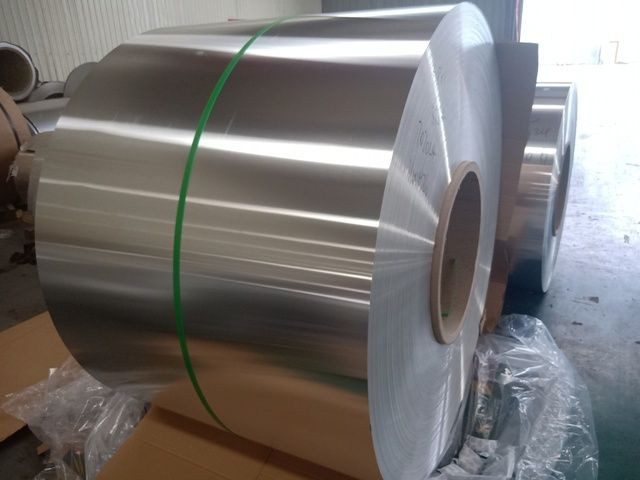5052 aluminum coil is an aluminum alloy with aluminum and magnesium as the main components, with excellent corrosion resistance and formability. It has moderate strength and is suitable for processing processes such as deep drawing, bending and welding. 5052 aluminum coil is widely used in ships, automobiles, transportation vehicles, chemical equipment and storage tanks, and is favored for its superior performance, especially in applications that require lightweight and corrosion resistance.

1. Overview of 5052 aluminum alloy
5052 belongs to the Al-Mg series rust-proof aluminum alloy (magnesium content is about 2.2-2.8%, containing a small amount of chromium), with the following characteristics:
- Excellent corrosion resistance: especially resistant to seawater, salt spray and atmospheric corrosion, suitable for marine engineering, shipbuilding, etc.
- Good processing performance: can be strengthened by cold working, excellent weldability, no heat treatment strengthening effect (non-heat treatment strengthening alloy).
- Typical uses: widely used in the manufacture of fuel tanks, pipelines, pressure vessels, automotive parts, building decorative panels, ship hulls, etc.
2. Different temper of 5052 aluminum coil
The temper of 5052 aluminum coil (O/H32/H34) represents different processing technology and performance, as follows:
(1). O temper (annealed state)
- Process: Through complete annealing (heating to above the recrystallization temperature and slow cooling), cold work hardening is eliminated and the material reaches a softened state.
- Performance characteristics:
Lowest strength: tensile strength is about 170-210MPa, yield strength ≤105MPa, elongation ≥20%.
Best plasticity: excellent ductility, suitable for complex forming processes such as deep drawing and stretching (such as making cans, lampshades, deep drawing parts).
Low internal stress: no work hardening residual stress, good stress corrosion resistance.
- Application scenarios: parts requiring high formability, such as deep drawing containers, stretching parts, and complex bending structural parts.
(2). H32 temper (work hardening + incomplete annealing, 1/4 hard)
- Process: incomplete annealing (stabilization treatment) after cold working (rolling, stretching, etc.) to retain some work hardening effect.
- Performance characteristics:
Medium strength: tensile strength of about 210-240MPa, yield strength of 170-210MPa, elongation ≥12%.
Moderate hardness: has a certain strength and plasticity, and the formability is better than the higher hardness state, but worse than the O state.
Good fatigue resistance: suitable for structures with light loads.
- Application scenarios: parts that require light forming and certain strength, such as fuel tanks, pipe fittings, general stampings, and ship inner plates.
(3). H34 temper (work hardening + incomplete annealing, 1/2 hard)
- Process: The degree of cold working is higher than H32 (or the degree of annealing is lower), the work hardening effect is more obvious, and the hardness is between 1/4 hard and full hard.
- Performance characteristics:
Higher strength: tensile strength of about 230-270MPa, yield strength of 200-240MPa, elongation ≥10%.
Higher hardness: strength and hardness are significantly improved, plasticity is further reduced, and the influence of work hardening needs to be considered during molding (may require step-by-step molding).
Strong deformation resistance: suitable for structures that require rigidity and support.
- Application scenarios: parts with medium strength requirements, such as automobile body panels, building decorative strips, radiator shells, and ship decks.
3. Comparison and selection suggestions of three tempers
Temper | Processing Technology | Strength (MPa) | Elongation | Typical Application |
O | Fully annealed | Tensile strength 170-210, yield ≤105 | ≥20% | Deep drawing parts, high formability parts |
H32 | Cold working + 1/4 hard annealing | Tensile strength 210-240, yield 170-210 | ≥12% | Lightly formed parts, medium strength structures |
H34 | Cold working + 1/2 hard annealing | Tensile strength 230-270, yield 200-240 | ≥10% | Medium strength parts, anti-deformation structures |
4. Precautions
- Difference in corrosion resistance: O temper has better stress corrosion resistance than H32/H34 due to no processing stress; if H state is used in a high stress environment, pay attention to the risk of stress corrosion.
- Processing formability: H34 state has a higher hardness, and may require greater mold pressure or step-by-step processing during molding to avoid cracking.
- Standard reference: The state performance of 5052 aluminum coil must comply with GB/T 3190 (China) or ASTM B209 (International) and other standards.
According to the strength, formability and corrosion resistance requirements of the specific use scenario, you can choose the appropriate temper of 5052 aluminum coil. If higher strength is required, you can further choose a higher hardness state such as H36, H38 (but the formability will be lower).